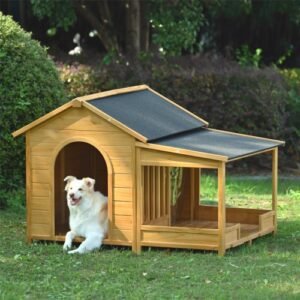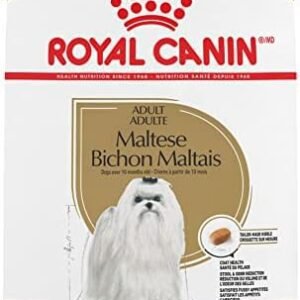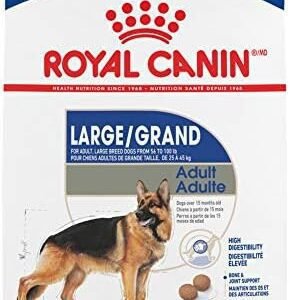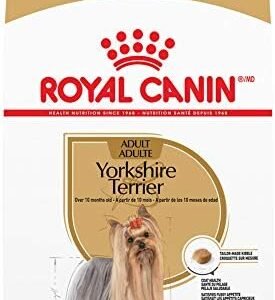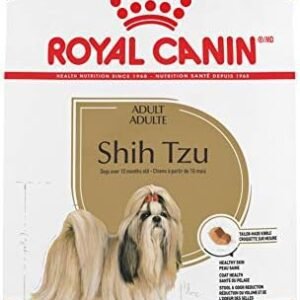
The Westiepoo, a delightful and spirited breed, offers a wonderful blend of personality and charm. In this article, we’ll embark on a journey to explore the unique qualities that define the Westiepoo dog breed. Understanding what makes this breed special is crucial for those considering bringing these delightful dogs into their homes. From their appearance to their temperament, we’ll dive deep into the world of Westiepoos to provide a comprehensive understanding of this beloved breed.
The Westiepoo breed, also known as the Westie Poodle mix, is a captivating canine companion that has been capturing the hearts of dog enthusiasts across the world. To begin our exploration of this remarkable breed, let’s start with an attention-grabbing fact: Westiepoos are renowned for their intelligence, loyalty, and adaptability. These qualities set them apart as extraordinary companions.
Selecting the right dog breed is a crucial decision for any prospective pet owner. Your choice can significantly impact your lifestyle, daily routines, and the overall dynamic of your household. The Westiepoo breed is known for its unique characteristics, making it a noteworthy choice for those seeking a delightful and affectionate four-legged friend.
Westiepoo Breed Characteristics
Now, let’s take a closer look at the characteristics that define the Westiepoo breed. We’ll provide you with a comprehensive table that outlines key information about Westiepoos. While some specific details may not be readily available, this table will give you a good overview of this delightful breed:
| Characteristic | Information |
|---|---|
| Height | 11-16 inches |
| Weight | 15-25 pounds |
| Life Span | 12-15 years |
| Good with | Families, Active Owners |
| Temperament | Intelligent, Loyal, Playful |
| Intelligence | Very High |
| Shedding Amount | Low to Moderate |
| Grooming | Moderate to High |
| Exercise Needs | High |
| Energy Level | High |
| Barking Level | Moderate |
| Drool Amount | Low |
| Coat Length/Texture | Wavy, Soft |
| Colors | White, Cream, Black, Brown |
| Patterns | Solid Colors |
Table of Contents
Breed History and Origin
Exploring Their Roots
The history of the Westiepoo breed is a fascinating journey that involves the crossing of two distinct but equally remarkable parent breeds: the West Highland White Terrier (Westie) and the Poodle. To understand the origin of the Westiepoo, it’s essential to delve into the histories of these parent breeds and how they came together to create a new and unique dog breed.
West Highland White Terrier (Westie): The Westie, known for its distinctive white coat, originated in Scotland. These terriers were bred to hunt small game, including foxes and vermin. Their white coat was a practical choice, as it made them more visible in the field. Westies are characterized by their sturdy build and an energetic nature.
Poodle: On the other side of the parentage, we have the Poodle, a breed known for its intelligence, hypoallergenic coat, and versatility. Poodles come in different sizes, including standard, miniature, and toy. They were initially bred as water retrievers, particularly for duck hunting.
The Westiepoo’s journey began when breeders decided to combine the Westie and Poodle, resulting in a crossbreed that retained the best qualities of both parent breeds. The intelligence of the Poodle and the tenacity of the Westie blended to create a breed that’s not only intelligent but also highly adaptable and loyal.
Notable Traits
The Westiepoo inherits several notable traits from its parent breeds, making it a unique and appealing choice for dog enthusiasts:
- Intelligence: The Westiepoo is exceptionally intelligent, thanks to the Poodle lineage. This trait makes them quick learners and highly trainable. They excel in obedience training and enjoy mental challenges.
- Playful Nature: These dogs are known for their playful and energetic disposition. They bring an infectious joy to their households, making them wonderful family pets.
- Loyal and Affectionate: Westiepoos are exceptionally loyal to their owners and form strong bonds. They thrive on human companionship and are always eager to be a part of family activities.
- Adaptability: With a mix of the tenacious Westie and the adaptable Poodle, Westiepoos are comfortable in various living environments. Whether you live in a spacious home with a yard or a cozy apartment, they’ll adapt well.
Relevance of Origin
Understanding the origin of the Westiepoo breed provides valuable insights into its characteristics and why it’s such a beloved choice for dog owners. The historical roles of the parent breeds have influenced the Westiepoo in several ways:
- Hunting Instinct: The Westie’s background as a small game hunter contributes to the Westiepoo’s alert nature. They may have a tendency to chase smaller animals and exhibit a strong prey drive.
- Intelligence: The Poodle’s intelligence is a cornerstone of the Westiepoo’s personality. They are quick thinkers, problem solvers, and highly adaptable.
- Allergy-Friendly Coat: The Poodle’s hypoallergenic coat has been passed down, making Westiepoos a suitable choice for individuals with allergies.
The origin of the Westiepoo breed showcases how carefully selected parent breeds can combine to create a dog that’s not only charming but also highly functional and adaptable to various lifestyles. This mix of history, intelligence, and unique traits is what makes the Westiepoo a breed that stands out among the canine community.
Understanding the Westiepoo Breed’s Traits
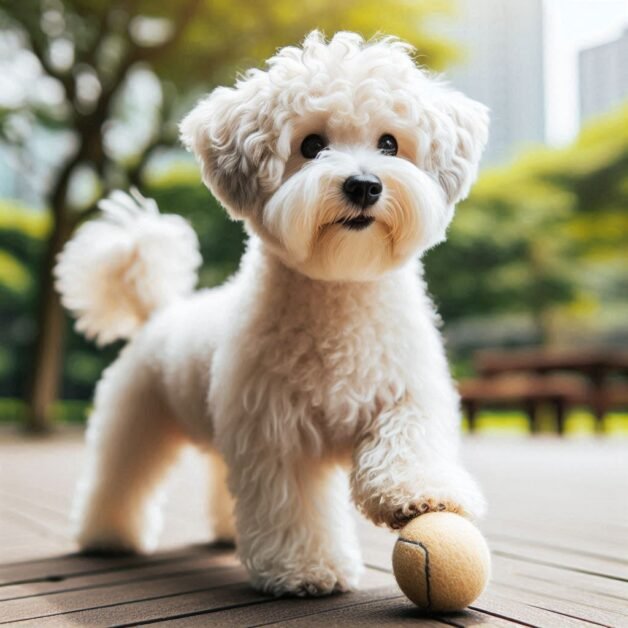
Physical Characteristics
The Westiepoo boasts a unique set of physical characteristics that contribute to its charm and appeal. While specific details such as height and weight may vary among individual dogs, here is a general overview of the Westiepoo’s physical traits:
- Size: Westiepoos are typically small to medium-sized dogs. They inherit their size from the West Highland White Terrier (Westie) and Poodle parent breeds, which are both compact in stature.
- Coat Type: Westiepoos have a wavy, soft coat. This coat is often hypoallergenic, making them a suitable choice for individuals with allergies. The soft and fluffy texture adds to their cuddle-worthy appearance.
- Colors: The Westiepoo’s coat can come in various colors, including white, cream, black, and brown. These colors often create beautiful and unique patterns in their fur.
- Distinguishing Features: Westiepoos may inherit some distinguishing features from their parent breeds. They often have a round, expressive face with dark, intelligent eyes. Their ears are floppy and their tails may have a slight curl.
Temperament Overview
The Westiepoo’s temperament is a delightful blend of qualities that make them exceptional family pets. Here’s an overview of their temperament:
- Intelligent: Thanks to their Poodle ancestry, Westiepoos are highly intelligent. This intelligence makes them quick learners and eager participants in training and games. They enjoy mental challenges, so keeping their minds engaged is essential for their well-being.
- Loyal and Playful: Westiepoos are known for their loyalty and playfulness. They form strong bonds with their human companions and thrive on spending time with the family. Their playful nature ensures that there’s never a dull moment when they’re around.
- Compatibility with Children: Westiepoos are generally good with children. Their playful and affectionate nature makes them wonderful playmates for kids. However, as with any dog breed, it’s important to teach children how to interact with dogs safely and respectfully.
- Compatibility with Other Pets: Westiepoos can be compatible with other pets, especially if they are socialized from a young age. They may have a strong prey drive due to their hunting heritage, so early socialization is key to ensuring harmonious coexistence with other animals in the household.
Environment Needs
Westiepoos are adaptable dogs that can thrive in different living environments. Here are some considerations for creating an ideal environment for your Westiepoo:
- Living Space: Westiepoos are well-suited for both apartments and houses with yards. While they are small to medium-sized, they have high energy levels and require regular exercise. Access to a yard where they can play and explore is beneficial, but they can also adapt to apartment living if their exercise needs are met.
- Temperature: Westiepoos are generally comfortable in moderate temperatures. However, their soft coat doesn’t provide substantial protection in extreme cold or hot weather. It’s important to monitor them and provide appropriate protection and shelter when temperatures are extreme.
- Exercise Requirements: Westiepoos have high exercise needs. Daily walks, playtime, and mental stimulation are essential to keep them happy and healthy. Be prepared to engage in regular physical and mental activities with your Westiepoo.
Common Behavioral Traits
Like any breed, Westiepoos have both positive and challenging behavioral traits. Understanding these traits can help you provide the best care and training for your Westiepoo:
- Positive Traits:
- Trainability: Westiepoos are highly trainable due to their intelligence and eagerness to please.
- Affectionate: They are known for their affectionate nature and enjoy being close to their family members.
- Playfulness: Westiepoos bring an abundance of playfulness to the household, making them excellent companions for families.
- Challenging Traits:
- Barking: Westiepoos can be prone to barking, especially when they are excited or alert. Early training can help manage excessive barking.
- Prey Drive: Their hunting heritage may lead to a strong prey drive. This means they might be inclined to chase smaller animals, so supervision is important.
- Separation Anxiety: Westiepoos may develop separation anxiety if left alone for extended periods. Proper training and gradual introductions to being alone can help mitigate this.
Popularity and Recognition
Current Popularity
The Westiepoo, a delightful and spirited breed, is gaining popularity among dog enthusiasts. As a designer breed, it has been capturing the hearts of many families seeking a loving and intelligent canine companion. While it may not be as widely recognized as some purebred breeds, the Westiepoo’s charm and unique characteristics have made it a sought-after choice for those looking for a delightful four-legged friend.
The popularity of the Westiepoo has been steadily increasing in recent years. This is attributed to several factors:
- Desirable Traits: Westiepoos inherit desirable traits from their parent breeds, such as intelligence, loyalty, and playfulness. These traits make them excellent family pets and companions.
- Hypoallergenic Coat: The hypoallergenic coat of the Poodle parent breed is a significant draw for individuals with allergies. Westiepoos offer a chance to have a dog without triggering allergies.
- Designer Breed Appeal: Designer breeds, which result from the intentional crossing of two distinct breeds, have gained popularity due to their unique combinations of traits and appearances.
- Social Media and Word of Mouth: The sharing of adorable Westiepoo photos and positive experiences on social media has contributed to their growing popularity.
Breed Recognition
The Westiepoo, as a designer breed, is not typically recognized by major kennel clubs or breed organizations. It doesn’t have its own breed standard. However, individual breeders and canine organizations may still register and acknowledge Westiepoos.
Most recognition and documentation for the Westiepoo can be found through hybrid or designer dog registries. These organizations aim to provide information and resources for designer breeds, including Westiepoos. While these registries may not carry the same weight as kennel club recognition, they serve as valuable sources of information for prospective Westiepoo owners.
Some of these hybrid dog registries may include:
- Designer Breed Registry (DBR): DBR is dedicated to designer breeds, including the Westiepoo. They provide documentation, information, and support for breeders and owners.
- international Designer Canine Registry (IDCR): IDCR is another registry that acknowledges designer breeds and can provide information on Westiepoos.
It’s important to note that the lack of recognition from traditional kennel clubs doesn’t diminish the value or appeal of the Westiepoo as a family pet. These dogs are cherished for their unique qualities and are beloved by their owners.
Notable Breed Varieties
The Westiepoo is a designer breed resulting from the intentional crossbreeding of the West Highland White Terrier (Westie) and the Poodle. As such, there are no distinct varieties or subtypes within the Westiepoo breed. However, the appearance and characteristics of individual Westiepoos may vary based on factors such as the specific parent breeds and the generation of the cross.
Most Westiepoos share common traits, such as their wavy, soft coat and their playful and intelligent nature. While coat colors can vary, the primary characteristics that define this breed remain consistent across different Westiepoos.
When considering a Westiepoo, it’s essential to evaluate each dog individually and consider its specific lineage and the traits it inherits from its parent breeds. This will help you better understand the unique qualities and needs of your particular Westiepoo.
In the next section, we’ll explore the grooming needs of Westiepoos, offering valuable insights into how to keep their coat looking its best and ensure their overall well-being.
Grooming Needs
The grooming requirements for Westiepoos can vary depending on their specific coat type. Here’s an overview of their grooming needs:
- Coat Maintenance: Westiepoos have a wavy, soft coat that requires regular grooming. Brushing a few times a week helps prevent matting and keeps their coat in good condition.
- Hypoallergenic Coat: Many Westiepoos inherit the hypoallergenic coat of the Poodle parent, which means they shed less and are a suitable choice for individuals with allergies.
- Professional Grooming: Some Westiepoos may require professional grooming every 6 to 8 weeks to maintain their coat and ensure it doesn’t become too tangled.
- Bathing: Regular baths are necessary to keep their coat clean and free from dirt or odors. Use a gentle dog shampoo to avoid skin irritation.
- Ears and Eyes: Check their ears and eyes regularly for any signs of infection or debris buildup. Clean them as needed to maintain good hygiene.
Exercise and Activity

Westiepoos are active and energetic dogs that require a good amount of exercise and mental stimulation. Here are some key points to keep in mind:
- Daily Exercise: Westiepoos benefits from daily exercise, which can include walks, playtime in the yard, and interactive games. Aim for at least 30-60 minutes of physical activity.
- Mental Stimulation: These intelligent dogs enjoy mental challenges. Puzzle toys and obedience training are great ways to keep their minds engaged.
- Socialization: Early socialization is essential to ensure they are well-behaved around other dogs and animals. It helps reduce any potential aggression or dominance issues.
- Playfulness: Westiepoos have a playful nature and enjoy interactive play with their owners. They thrive on attention and being part of family activities.
Health Considerations and Care
Maintaining the health and well-being of your Westiepoo is essential for a happy and fulfilling life. Here are some key health considerations and care tips:
Common Health Issues
While Westiepoos are generally healthy dogs, they can be prone to some common health issues. These include:
- Hip Dysplasia: This is a genetic condition that can affect the hips and cause pain and mobility issues.
- Patellar Luxation: It’s a condition where the kneecap can dislocate, leading to lameness.
- Allergies: Some Westiepoos may be prone to skin allergies or food sensitivities. It’s important to identify and manage allergens in their diet and environment.
- Eye Problems: They can be susceptible to eye issues, including cataracts.
- Dental Health: Like many small breeds, Westiepoos can be prone to dental problems. Regular dental care is important.
- Legg-Calve-Perthes Disease: A condition that affects the hip joint and can cause pain and lameness.
Regular check-ups with a veterinarian are crucial to monitor and address these potential health issues. Being aware of the breed’s susceptibility to certain conditions allows for early intervention and better management.
Lifespan and Longevity
The average lifespan of a Westiepoo is around 12 to 15 years. To help your Westiepoo live a long and healthy life, consider the following tips:
- Regular Veterinary Check-ups: Schedule annual check-ups with your veterinarian to monitor your dog’s health and address any emerging issues.
- Balanced Diet: Provide a balanced and appropriate diet to maintain a healthy weight and overall health. Consult your veterinarian for dietary recommendations.
- Exercise: Ensure your Westiepoo gets regular exercise to keep them physically fit and mentally stimulated.
- Dental Care: Take care of their dental hygiene to prevent dental issues. Regular brushing and dental chews can help.
- Grooming: Maintain their coat through regular grooming to prevent matting and skin issues.
- Socialization: Continue to socialize yourWestiepoo throughout their life to ensure they remain well-adjusted and friendly.
Exercise and Activity Recommendations
Ensuring that your Westiepoo gets the right amount and type of exercise is crucial for their physical and mental well-being. These dogs are known for their high energy levels and playfulness, so a well-structured exercise routine is essential. Here are some exercise and activity recommendations for your Westiepoo:
Daily Exercise Routine
Westiepoos benefit from daily exercise to keep them physically fit and mentally stimulated. A well-exercised Westiepoo is a happy and well-behaved dog. Here’s a breakdown of a typical daily exercise routine for your Westiepoo:
- Morning Walk: Start the day with a brisk morning walk. A 20-30 minute walk is an excellent way to provide mental stimulation and help your Westiepoo burn off some energy.
- Playtime: Engage in interactive playtime for about 15-20 minutes. This can include playing fetch, tug-of-war, or other games that allow your Westiepoo to use their intelligence and energy.
- Training Session: These intelligent dogs enjoy mental challenges. Incorporate a training session into their daily routine. It can be as simple as practicing basic obedience commands or teaching them new tricks. Keep training sessions short but frequent throughout the day.
- Afternoon Walk: Another 20-30 minute walk in the afternoon helps break up the day and provides more exercise.
- More Playtime: Spend an additional 15-20 minutes playing with your Westiepoo. Interactive toys and puzzles can be a great way to keep them mentally engaged.
- Evening Walk: A shorter walk in the evening, around 15-20 minutes, helps them wind down before bedtime.
- Bedtime Routine: End the day with a calming routine. A gentle walk before bedtime can help your Westiepoo relax and prepare for a restful night’s sleep.
Additional Activities
In addition to daily exercise, consider incorporating these activities to keep your Westiepoo physically and mentally challenged:
- Agility Training: Westiepoos are agile and can excel in agility training. Set up an agility course in your yard or attend agility classes.
- Swimming: If you have access to a pool or a safe swimming area, Westiepoos tend to enjoy water activities. Swimming is an excellent full-body workout.
- Hiking: Take your Westiepoo on hikes in dog-friendly areas. The change of scenery and exploration can be stimulating for them.
- Playdates: Arrange playdates with other dogs. Socializing with other canines provides exercise and mental stimulation.
- Dog Parks: Visits to a dog park can allow your Westiepoo to run, play, and interact with other dogs.
Exercise Precautions
While exercise is essential, it’s crucial to be mindful of some precautions, especially considering the Westiepoo’s high energy levels:
- Weather Conditions: Be cautious about exercising in extreme weather conditions. In hot weather, ensure your Westiepoo doesn’t overheat. In cold weather, protect them from the cold and consider a doggy sweater or jacket.
- Leash Training: Westiepoos may have a strong prey drive due to their hunting heritage. Ensure they are well-trained on a leash to prevent chasing after small animals or other distractions.
- Limit High-Impact Activities: Due to their small size, be cautious about high-impact activities that might strain their joints. Activities like jumping from heights should be minimized.
- Consult with a Vet: If you have any concerns about your Westiepoo’s exercise routine or specific health conditions, consult with your veterinarian for guidance on the best exercise plan.
By following these exercise and activity recommendations, you can ensure that your Westiepoo remains happy, healthy, and well-adjusted. Tailoring their exercise routine to their individual needs and providing a variety of activities will help keep them mentally and physically stimulated.
Health Considerations and Care
Maintaining the health and well-being of your Westiepoo is essential for a happy and fulfilling life. While they are generally healthy dogs, there are some health considerations and care tips you should be aware of to keep your furry friend in the best shape possible.
Common Health Issues
While Westiepoos are typically healthy, they can be prone to some common health issues. Being informed about these conditions can help you recognize potential problems early and seek appropriate veterinary care. Common health issues in Westiepoos include:
- Hip Dysplasia: This is a genetic condition that can affect the hip joint, leading to pain and mobility issues.
- Patellar Luxation: It’s a condition where the kneecap can dislocate, leading to lameness.
- Allergies: Some Westiepoos may be prone to skin allergies or food sensitivities. Identifying and managing allergens in their diet and environment is crucial.
- Eye Problems: They can be susceptible to eye issues, including cataracts.
- Dental Health: Like many small breeds, Westiepoos can be prone to dental problems. Regular dental care, including brushing their teeth and providing dental chews, is essential.
- Legg-Calve-Perthes Disease: A condition that affects the hip joint and can cause pain and lameness.
Regular check-ups with your veterinarian can help monitor your Westiepoo’s health and address these potential health issues. Remember that early intervention and proper management can significantly improve your dog’s quality of life.
Lifespan and Longevity
The average lifespan of a Westiepoo ranges from 12 to 15 years, making them a long-lived breed. To help your Westiepoo enjoy a full and healthy life, consider the following tips:
- Regular Veterinary Check-ups: Schedule annual check-ups with your veterinarian to monitor your dog’s health and address any emerging issues.
- Balanced Diet: Provide a balanced and appropriate diet to maintain a healthy weight and overall health. Consult your veterinarian for dietary recommendations specific to your Westiepoo’s needs.
- Exercise: Ensure your Westiepoo gets regular exercise to keep them physically fit and mentally stimulated.
- Dental Care: Take care of their dental hygiene to prevent dental problems. Regular brushing, dental chews, and veterinary dental cleanings as needed can help maintain oral health.
- Grooming: Regular grooming is essential to prevent matting and skin issues. Brush their coat several times a week, and schedule professional grooming every 6 to 8 weeks if necessary.
- Socialization: Continue to socialize your Westiepoo throughout their life to ensure they remain well-adjusted and friendly towards people and other dogs.
With the right care, attention, and a healthy lifestyle, your Westiepoo can enjoy a long, happy, and fulfilling life as a cherished member of your family. Regular veterinary care and a focus on preventative health measures are key to ensuring the well-being of your beloved Westiepoo.
Nutrition and Feeding Guidelines

Proper nutrition is essential for the well-being of your Westiepoo. To keep them healthy, you should consider their size, age, activity level, and any dietary restrictions or allergies commonly associated with the breed. Here are some nutrition and feeding guidelines:
Size Matters
Westiepoos are small to medium-sized dogs. The amount and type of food they require will depend on their specific size. Be sure to choose a high-quality dog food formulated for small to medium breeds. The packaging of dog food typically provides feeding guidelines based on your dog’s weight. Follow these guidelines to ensure you’re offering the appropriate portion.
Age-Appropriate Feeding
Puppies, adults, and seniors have different nutritional needs. When feeding your Westiepoo, consider their age:
- Puppies: Westiepoo puppies need a balanced diet to support their growth and development. Choose a puppy food that meets the nutritional requirements for young dogs. Feed them multiple times a day, gradually reducing the frequency as they grow.
- Adults: Adult Westiepoos should be fed a diet suitable for their activity level. If your dog is highly active, they may need a diet for active dogs. If they’re more sedentary, choose a maintenance or weight management formula.
- Seniors: As your Westiepoo ages, their metabolism may slow down, so they may require a senior dog food that caters to their changing needs.
Dietary Restrictions and Allergies
Some Westiepoos may have dietary restrictions or allergies. Pay attention to any signs of food allergies such as itching, digestive issues, or skin problems. If you suspect your dog has food allergies, consult your vet to identify the allergen and choose an appropriate hypoallergenic dog food.
Feeding Schedule
Establish a regular feeding schedule for your Westiepoo. Consistency is key to maintaining their health and ensuring they get the right amount of food. Typically, feeding your adult Westiepoo twice a day is recommended, but consult with your veterinarian for specific guidance.
Portion Control
Be mindful of portion control. Avoid overfeeding your Westiepoo to prevent obesity, which can lead to various health issues. The feeding guidelines on the dog food packaging are a good starting point, but your vet can provide more personalized recommendations based on your dog’s specific
Personal Stories and Testimonials
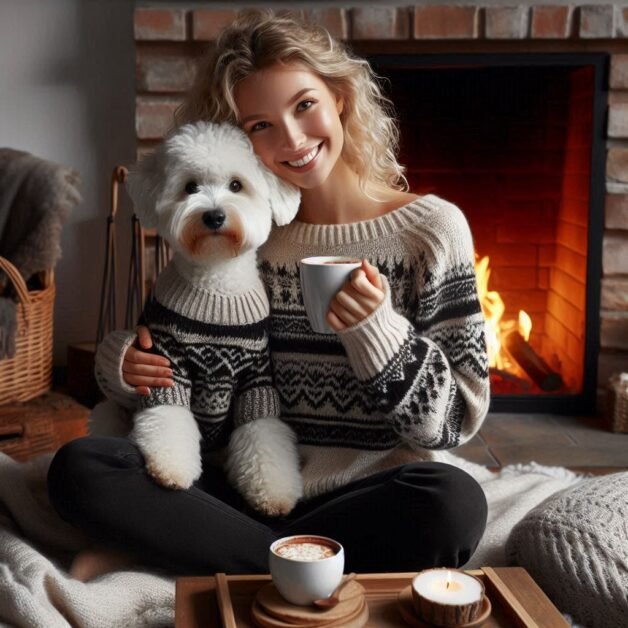
To provide a more personal touch to our exploration of the Westiepoo breed, let’s hear from real owners who have shared their experiences, challenges, and joys of having a Westiepoo as part of their families.
Testimonial 1 – Sarah:
Sarah from Colorado shares her story of how her Westiepoo, Max, became a cherished part of her family:
“I never expected to have a Westiepoo in my life, but Max changed everything. From the day he entered our home, he brought an incredible amount of joy and love. Max is not just a pet; he’s a family member. His intelligence is astonishing – he learns new tricks so quickly that it’s almost unbelievable. But what truly makes him special is his loyalty. He’s always by our side, whether we’re going for a hike or just watching TV. Max is the perfect blend of playfulness and affection. I can’t imagine life without him.”
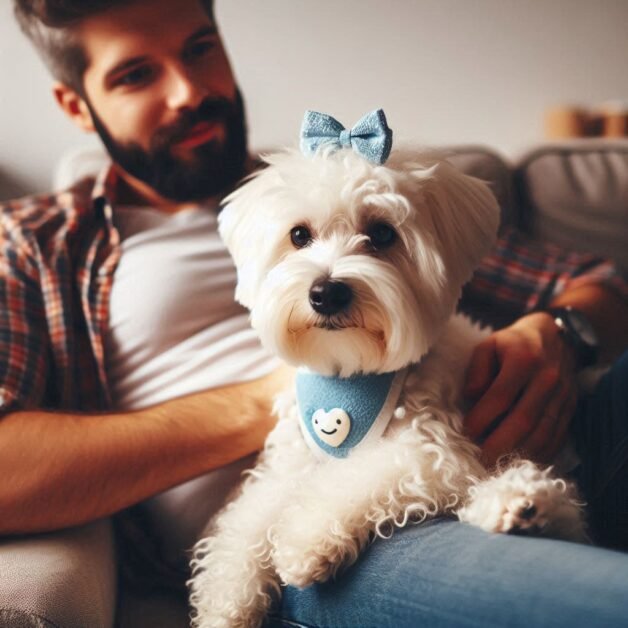
Testimonial 2 – David:
David from Texas shares his experience of introducing his Westiepoo, Luna, to their family with young kids:
“We were a bit concerned about how Luna would adapt to our family, as we have two young children. But she surprised us in the best way possible. Luna is not just good with kids; she adores them. She’s incredibly gentle and patient, and she’s become the kids’ favorite playmate. Her adaptability is impressive. Whether we’re in the yard playing or indoors for a quiet family
Grooming and Care
Grooming and care are essential aspects of ensuring your Westiepoo’s health, happiness, and overall well-being. In this section, we’ll provide you with valuable insights into the grooming needs of the Westiepoo breed and offer recommendations for specific accessories and care products tailored to their needs.
Coat Care
The Westiepoo’s coat is one of its standout features. Its wavy, soft texture is not only charming but also requires regular attention to keep it in the best condition. Here are some grooming tips for maintaining your Westiepoo’s coat:
- Brushing: Regular brushing is crucial to prevent matting and tangling in their soft coat. Aim to brush your Westiepoo a few times a week, which will help distribute natural oils and keep the coat healthy.
- Bathing: Unlike some other breeds, Westiepoos generally don’t require frequent baths unless they get particularly dirty. When bathing your Westiepoo, use a mild dog shampoo to avoid skin irritation. Be sure to rinse thoroughly.
- Ear Cleaning: Westiepoos have floppy ears, which can trap moisture and debris. Regularly check and clean their ears to prevent infections. Consult with your veterinarian on recommended ear cleaning products and techniques.
- Nail Trimming: Keep an eye on your Westiepoo’s nails. Overgrown nails can be uncomfortable for your dog and may cause issues with their gait. Regularly trim their nails to an appropriate length.
- Teeth Cleaning: Dental health is crucial for Westiepoos. Dental issues can lead to discomfort and other health problems. Brush their teeth regularly with a dog-friendly toothbrush and toothpaste. Dental chews and toys can also help maintain oral hygiene.
- Professional Grooming: Depending on your Westiepoo’s coat type, some individuals may require professional grooming. If their coat leans more toward the Poodle side with a tighter curl, professional grooming can help keep their coat in optimal condition. Consult with your veterinarian or a professional groomer to determine your Westiepoo’s specific grooming needs.
Health and Wellness
Ensuring your Westiepoo’s health and wellness is a top priority. Regular veterinary check-ups are essential for monitoring their overall health and addressing potential issues. Here are some health considerations specific to the Westiepoo breed:
- Hip Dysplasia: This hereditary condition can affect the hip joint, leading to pain and discomfort. To reduce the risk of hip dysplasia, maintain a healthy weight for your Westiepoo, and provide them with regular exercise.
- Allergies: Westiepoos may be prone to allergies, including food allergies and skin allergies. If you notice signs of allergies such as itching, redness, or gastrointestinal issues, consult your veterinarian. Allergies can often be managed with dietary changes or medications.
- Eye Conditions: Due to their Poodle heritage, Westiepoos may be at risk of certain eye conditions, including cataracts and progressive retinal atrophy (PRA). Regular eye check-ups can help identify and manage these issues if they arise.
- Dental Health: Dental health is crucial for Westiepoos. Neglecting their oral hygiene can lead to dental problems, including gum disease. Regular brushing, dental chews, and professional cleanings are essential for maintaining their dental health.
- Regular Check-ups: Routine veterinary check-ups are vital for monitoring your Westiepoo’s overall health and addressing any potential issues promptly. Your veterinarian can provide guidance on vaccinations, preventative care, and general well-being.
Recommended Accessories and Care Products
To assist you in grooming and caring for your Westiepoo, here are some recommended accessories and care products tailored to their needs:
- Slicker Brush: A slicker brush is excellent for removing tangles and mats in your Westiepoo’s soft coat. Look for one with soft bristles to avoid damaging their fur.
- Hypoallergenic Shampoo: If your Westiepoo has sensitive skin, consider using a hypoallergenic dog shampoo to prevent skin irritation during baths.
- Ear Cleaning Solution: Invest in a veterinarian-recommended ear cleaning solution to maintain your Westiepoo’s ear hygiene.
- Dog Nail Clippers: High-quality dog nail clippers are essential for keeping your dog’s nails at an appropriate length. Opt for clippers that have a safety feature to prevent over-cutting.
- Dog Toothbrush and Toothpaste: Regular dental care is vital for your Westiepoo. Purchase a dog-friendly toothbrush and toothpaste to maintain their oral health.
- Grooming Shears: If your Westiepoo requires professional grooming or you prefer to trim their coat at home, grooming shears are useful for precise trimming.
- Dog Toys: Keeping your Westiepoo mentally and physically engaged is essential for their well-being. Consider interactive toys and puzzle toys to provide mental stimulation and prevent boredom.
- Dog Harness: A harness can be a more comfortable and secure option for walking your Westiepoo, particularly if they tend to pull on a leash.
By investing in these recommended accessories and care products, you can ensure that your Westiepoo receives the best grooming and care tailored to their specific needs. Remember that every dog is unique, so it’s essential to adapt your grooming and care routine to suit your Westiepoo’s individual requirements.
Choosing and Adopting a Westiepoo Dog Breed
When it comes to bringing a new furry friend into your life, adopting a Westiepoo can be an incredibly rewarding experience. These adorable and intelligent dogs are known for their charming personalities, making them fantastic companions for families and individuals alike. In this section, we’ll explore the reasons for adopting a Westiepoo, how to prepare for the adoption process, what to expect during the process, and the importance of ethical breeding considerations.
Reasons for Adoption
Adopting a Westiepoo or any other rescue dog can be a deeply fulfilling experience. There are several compelling reasons to consider adoption:
- Give a Rescue Dog a Second Chance: Many dogs, including Westiepoos, are in need of loving homes. By adopting, you’re providing a dog in need with a second chance at a happy and fulfilling life.
- Save a Life: Adopting from a shelter or rescue organization can save a dog’s life. Shelters often struggle with limited space and resources, and adopting a dog frees up space for another animal in need.
- Temperament Assessment: Many rescue organizations assess the temperament and behavior of their dogs, helping you find a dog that matches your lifestyle and preferences.
- Health Care and Vaccinations: Dogs in shelters are usually spayed or neutered, vaccinated, and may even be microchipped. This can save you time and money on these initial health procedures.
- Reduce the Demand for Puppy Mills: By adopting, you’re not supporting puppy mills, which often prioritize profit over the well-being of the animals.
- Community Involvement: Adopting from local shelters or rescue groups contributes to your community by supporting their efforts to care for and rehome animals.
Research and Preparation
Before adopting a Westiepoo, it’s crucial to thoroughly research and prepare for the process. Here’s what you need to do:
- Understand the Breed: Take the time to learn about the Westiepoo breed’s specific needs, characteristics, and temperament. This will help you determine if it’s the right fit for your lifestyle.
- Assess Your Lifestyle: Consider your daily routine, activity level, and living situation. Westiepoos are energetic dogs that require exercise and mental stimulation. Ensure that you can meet their needs.
- Financial Responsibility: Owning a dog involves financial responsibilities such as food, grooming, veterinary care, and supplies. Make sure you’re financially prepared for the costs associated with dog ownership.
- Training and Socialization: Be ready to invest time and effort into training and socializing your Westiepoo. They thrive on mental challenges, and early training is essential for a well-behaved pet.
- Home Preparation: Puppy-proof your home by removing hazards and providing a safe and comfortable space for your new dog. Invest in essential supplies such as a leash, collar, food, water bowls, and a cozy bed.
Adoption Process
The adoption process for a Westiepoo typically involves several steps. Here’s what you can expect:
- Application: Start by filling out an adoption application provided by the shelter or rescue organization. This application gathers information about your living situation, experience with pets, and why you want to adopt a Westiepoo.
- Home Visit: Some organizations may conduct a home visit to ensure that your living space is safe and suitable for a dog. This is done to ensure that the dog will have a comfortable and secure environment.
- Meet and Greet: You’ll have the opportunity to meet the Westiepoos available for adoption. Spend time with them to assess their temperament and see if there’s a connection.
- Reference Check: Be prepared for the organization to contact your references, including your veterinarian and personal references. They want to ensure that you have a history of responsible pet ownership.
- Adoption Fee: There is usually an adoption fee associated with bringing a Westiepoo into your home. This fee helps cover the costs of vaccinations, spaying or neutering, and other initial care.
- Adoption Agreement: Once approved, you’ll typically sign an adoption agreement that outlines your responsibilities as a pet owner and the organization’s policies.
- Bringing Your Westiepoo Home: After completing the adoption process, you can bring your new Westiepoo home. Ensure you have all the necessary supplies ready and prepare for a smooth transition.
Breeding and Ethical Considerations
While adopting a Westiepoo is a wonderful choice, it’s also essential to understand the importance of ethical breeding practices. Responsible breeding contributes to the health and well-being of the breed as a whole. Here are some considerations:
- Health Screening: Ethical breeders perform health screening on their breeding dogs to identify and reduce the risk of hereditary diseases. This ensures that puppies are less likely to inherit genetic health issues.
- Genetic Diversity: A responsible breeder aims to maintain genetic diversity within the breed. This helps prevent the development of inherited disorders caused by excessive inbreeding.
- Socialization: Well-bred puppies are often raised in a home environment, which exposes them to various stimuli and experiences. This early socialization contributes to well-adjusted and confident adult dogs.
- Lifetime Commitment: Ethical breeders are dedicated to the lifelong well-being of their dogs. They provide support to puppy buyers, take dogs back if necessary, and avoid overbreeding.
- No Overbreeding: Ethical breeders prioritize the health and welfare of the dogs over profit. They do not engage in overbreeding and ensure that their breeding dogs have appropriate rest between litters.
Remember that adopting a Westiepoo is a compassionate choice, but if you decide to go the route of purchasing from a breeder, choose one who follows responsible breeding practices and prioritizes the health and happiness of the dogs.
In conclusion, choosing to adopt a Westiepoo is a decision filled with joy and the potential for a lifelong bond. Whether you adopt from a shelter or a rescue organization or choose a responsible breeder, you’ll be providing a loving home to a wonderful companion. The Westiepoo’s intelligence, playfulness, and loyalty make them an excellent choice for families and individuals seeking a furry friend to share their lives with.
Frequently Asked Questions (FAQs)
What is the average lifespan of a Westiepoo?
The average lifespan of a Westiepoo typically falls between 12 to 15 years. With proper care and a healthy lifestyle, they can live even longer.
Do Westiepoos shed a lot?
Westiepoos are known for having low to moderate shedding. Their wavy, soft coat tends to trap loose fur, which is why they are often considered hypoallergenic.
Are Westiepoos suitable for first-time dog owners?
Yes, Westiepoos can be a good choice for first-time dog owners. Their high intelligence and trainability make them easier to handle, and their loyalty and affectionate nature make them wonderful companions.
How much exercise does a Westiepoo need daily?
Westiepoos have high exercise needs and should get at least 30-60 minutes of physical activity daily. This can include walks, playtime, and mental stimulation.
Are Westiepoos good with other pets in the household?
Westiepoos can get along with other pets if properly socialized from a young age. However, they may have a strong prey drive due to their hunting heritage, so early socialization is important.
What kind of grooming do Westiepoos require?
Westiepoos have a moderate to high grooming requirement. Regular brushing is essential to prevent matting in their soft coat. Professional grooming is recommended every 6-8 weeks.
Do Westiepoos suffer from separation anxiety?
Westiepoos are known to form strong bonds with their owners and may experience separation anxiety if left alone for long periods. They thrive on human companionship.
Can Westiepoos live in hot climates?
While Westiepoos can adapt to various living environments, they are more comfortable in moderate temperatures. Their soft coat doesn’t provide much insulation in extreme heat, so they may need protection and access to shade.
Are Westiepoos good with children?
Westiepoos are generally good with children due to their playful and affectionate nature. However, it’s essential to teach children how to interact with dogs safely and respectfully.
Are Westiepoos prone to specific health issues?
Westiepoos can inherit some of the health issues common to their parent breeds, such as hip dysplasia, patellar luxation, and skin allergies. Regular veterinary check-ups are essential to monitor their health.




















